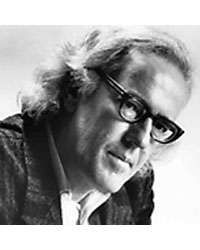Since that time he has completed a number of commissions for such prominent organizations as the National Arts Centre Orchestra, the CBC, the National Youth Orchestra, the York Winds, IRCAM and the Elmer Iseler Singers. Composition time has been at a great premium due to his career as a flutist and his administrative responsiblities as artistic director of the Advanced Studies in Music Program, Banff Centre (1986-89); New Music Concerts, Toronto (1971-present); Music at Shawnigan (1981-1990); and from 1988 until 2004 was Professor of Flute at the Hochschule für Musik, Freiburg, Germany. In 2003 he was honoured with a Lifetime Achievement Award by the National Flute Association (USA). However, composition is still an important activity in his life and each year a period of time is reserved for composing. Each of Aitken's works deals with particular questions of colour, space and instrumental technique and the music is an attempt to create a memorable, colourful, sonic solution to these problems. The earliest pieces deal with various 12 tone transformations and the spacial moving of sound. But following Aitken's five month journey to the Orient, he undertook four works reflecting his musical experiences there. After these four Shadows he returned again to the extra musical challenge of instrumental extension and amplification with his Spiral for orchestra. Since that time, his music reflects the minimal and harmonic influences of today, mixed with a rhythmic drive from his student years with John Weinzweig and the elaborate melodic structure of numerous Oriental musics. Nov 2004 |
|
|
|
|
Robert (Morris) Aitken - Composer Information
Search our Library
Featured Composers
Counterpoint Music Library Services
Copyright © 2012 All Rights Reserved
Copyright © 2012 All Rights Reserved
Created by Wavelength Media

